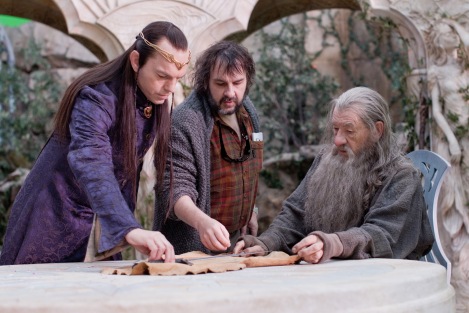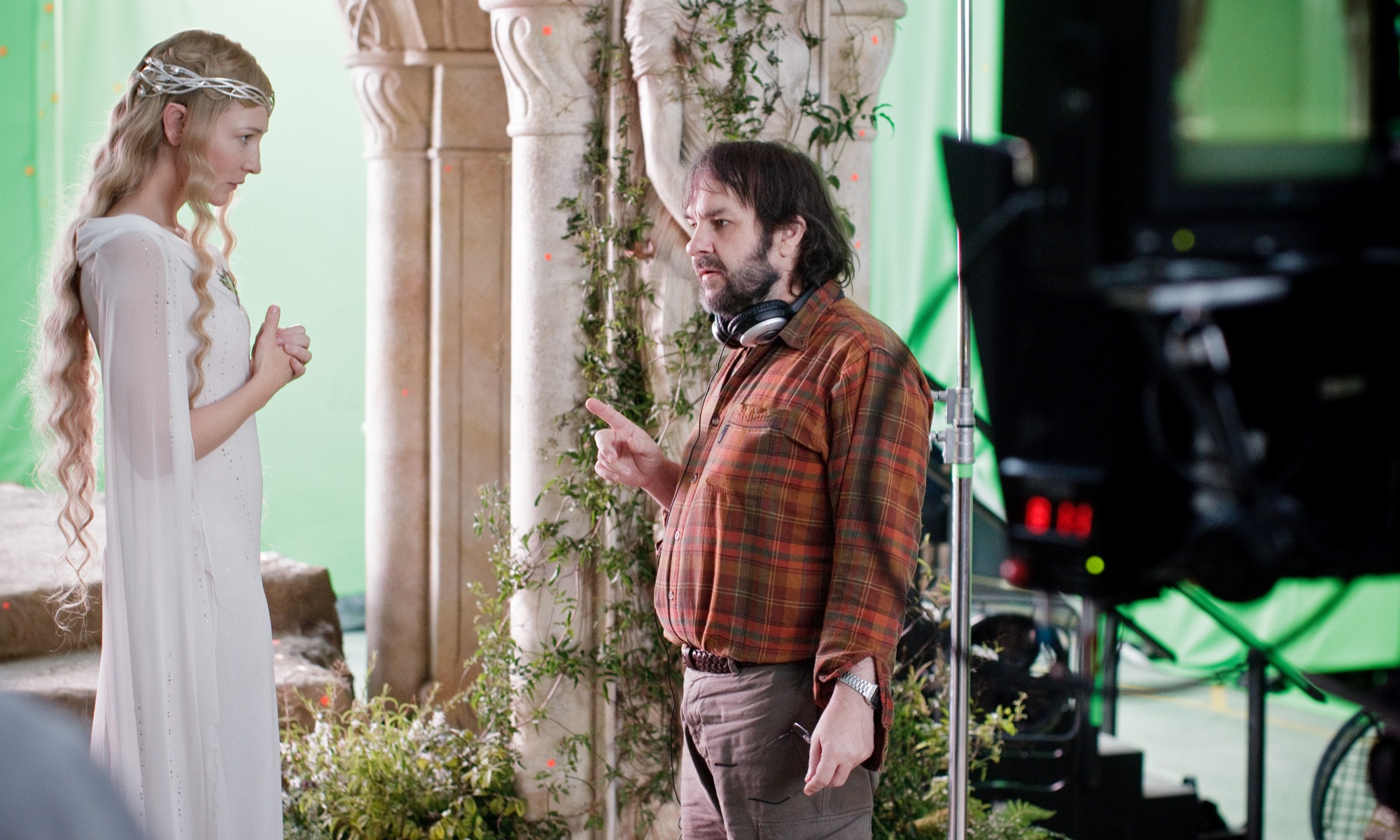Thomas J. McLean is an AwardsLine contributor. This article appeared in the Dec. 19 issue of AwardsLine.
Nearly 10 years after The Lord of the Rings trilogy wrapped its record-breaking run with a best picture Oscar and more than $3 billion in worldwide ticket sales, director Peter Jackson has done the last thing he expected: He got the band back together for
The Hobbit: An Unexpected Journey.
“I came away from Lord of the Rings with 266 days of shooting three movies and thought I’d never do that again in my life,” says Jackson. “Then we sat down at the first production meeting on The Hobbit, and I flipped to the last page of the schedule, and it was 266 days! It was exactly the same length of time! And I just said, ‘I cannot believe I find myself back at this place again.’ ”

The first in a new trilogy adapting the first book in J.R.R. Tolkien’s classic Middle Earth mythology, Jackson and his crew’s steady hand on The Hobbit offers reassuring creative continuity while pushing the technical envelope by adding stereoscopic 3D and, most controversially, shooting at 48 frames per second.
But much like Bilbo Baggins’ own journey, the 10-year road to making The Hobbit followed—a wandering path on its way to the screen. Originally pitched to Miramax in 1995 as a standalone film that could lead into The Lord of the Rings, The Hobbit rights were split between the Saul Zaentz Company and MGM, and a fix was not possible at the time, Jackson says.
Those issues remained even after the Rings trilogy was completed in 2003, though Warner Bros. tapped Jackson and cowriters and producers Fran Walsh and Philippa Boyens a few years later to develop the film anyway in the hopes that a deal would be reached.

“We would have worked on it for probably two years without a green light, which was a bit soul-destroying really because if you’re committing to something you want to know it’s happening,” says Jackson.
On the creative end, adapting The Hobbit proved a very different animal, says Boyens. Often thought of as a children’s book, The Hobbit also is very episodic, features a lot of characters, and has a tone that darkens considerably as it progresses.
Thinking a different sensibility would freshen up things, Jackson ceded the director’s chair to Guillermo del Toro. “We thought it would be interesting to have another director come onboard with a different sensibility, for the same reasons as they use different directors on Bond movies,” he says.
But with MGM in bankruptcy and no rights deal in sight, del Toro exited in 2010, prompting Jackson to take back the reins. “We felt a responsibility as producers and also, having developed the project with Guillermo, we had come to realize that his could be a really cool movie,” Jackson says.

Boyens says they started over on the script to tailor it both for Jackson and the cast, which includes returning members Ian McKellen, Andy Serkis, Cate Blanchett, and Hugo Weaving alongside newcomers like Martin Freeman as Bilbo. Of del Toro’s version, Boyens says the biggest change is the portrayal of Bilbo.
“It shifted and changed into someone who, rather than being slightly younger and more innocent in the world, once had a sense of longing for adventure and has lost it and become fussy and fusty,” she says.
That led Jackson to Freeman. “We needed a dramatic actor because it is ultimately a dramatic role, but Bilbo Baggins is a much funnier character than Frodo was,” says Jackson. “There’s very few dramatic actors who can do comedy very well, but Martin seemed to possess the perfect qualities.”
Reuniting almost all of the crew from Rings gave Jackson, Boyens, and Walsh freedom to focus on the creative side, with first assistant director Carolynne Cunningham and unit production manager Zane Weiner stepping up to add producer duties and handle logistics.
“Peter’s got so much to worry about with directing that he relies on other people to sort out some of the other problems for him,” says Cunningham.
Drawing on material published in the appendix of The Return of the King, in addition to the dense text of The Hobbit itself, the project expanded from the original two-film adaptation to a trilogy. Boyens says this was entirely a creative decision and came from structuring the story to work onscreen. “It was really about what we would not be able to tell, what we’d have to leave out of the story,” she says.
Shooting at a high frame rate is something Jackson says has intrigued him for a long time, and he liked the look of the footage he made at 60 frames per second for Universal Studios’ King Kong theme-park ride. Early reaction has been split, however, earning accolades for its remarkable clarity and criticisms for the video-like quality of motion.
“It’s certainly different, and people are accustomed, obviously, to 24 frames being the look of film,” says Jackson. “But at the same time, do you also say that we achieved technical perfection in 1927? I mean, with all the technology that exists today, with all the ability we have to shoot 4K images and to project at high frame rates with these huge screens, the sound systems, do we settle for the 1927 standards, or do we say, ‘How can we use this technology to enhance the cinemagoing experience?’ ”
The frame rate had little effect on the 2,176 visual effects shots, says visual effects supervisor Joe Letteri. “There’s more work to be done, but a lot of what we do is independent of the frame rate,” he says.
The switch to 3D meant effects previously done with miniatures had to be done digitally, and advancements in technology meant nothing could be reused from earlier films. The main beneficiary was Gollum, who was completely rebuilt using new techniques to create anatomically correct musculature and more detail without changing the character’s look.
“The amount of detail in Gollum’s eye is more than what we had in his entire body on the first film,” says Letteri.
Technology also made it easier for Andy Serkis to reprise the role. Where he had to perform scenes multiple times for the original both on set and in controlled motion-capture environments, new motion-capture techniques allowed him just to play the character on set with Freeman.
“We played that scene out in its entirety every time we shot it, and it’s a 13-minute scene,” says Serkis. “It’s like a theater piece really, and we just explored it and mined it for everything that it was worth, and Peter shot it from lots of different angles.”
While Gollum has only one scene in the trilogy, Serkis took on additional responsibility as second-unit director. “Pete wanted me to be there because I’ve been through the experience of working on The Lord of the Rings trilogy and understand the rhythm and pace and stamina involved in keeping performance up during those films,” he says.
With all three films shot back to back, Jackson and crew are finishing The Hobbit: The Desolation of Smaug for next December, and the concluding The Hobbit: There and Back Again for July 2014.
Jackson says he thinks making the trilogies in reverse order will make for a better, more cohesive six-film series in the end. “I think we got a much better unity shooting The Hobbit after The Lord of the Rings, ironically.”

